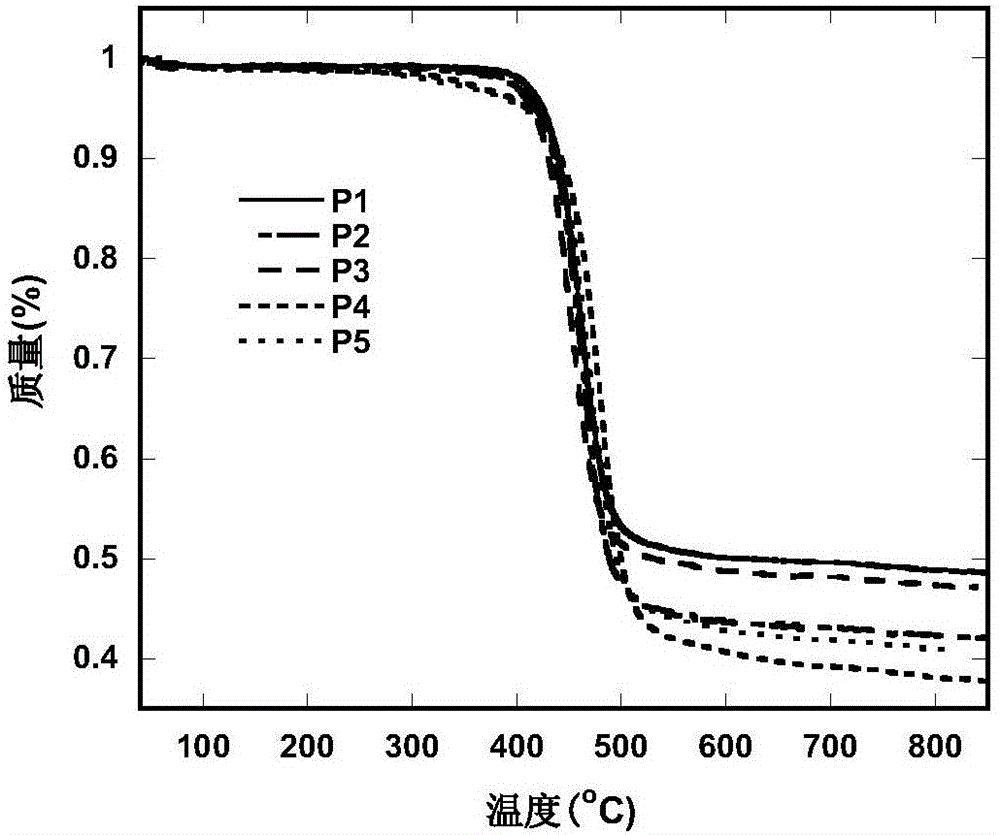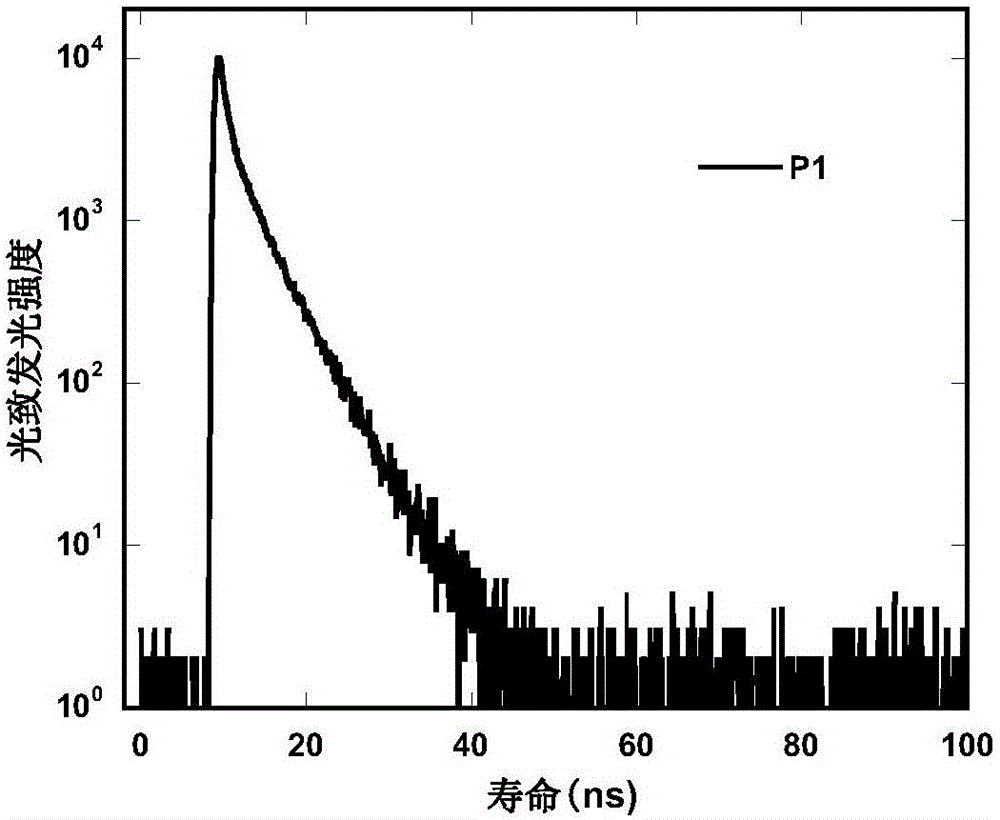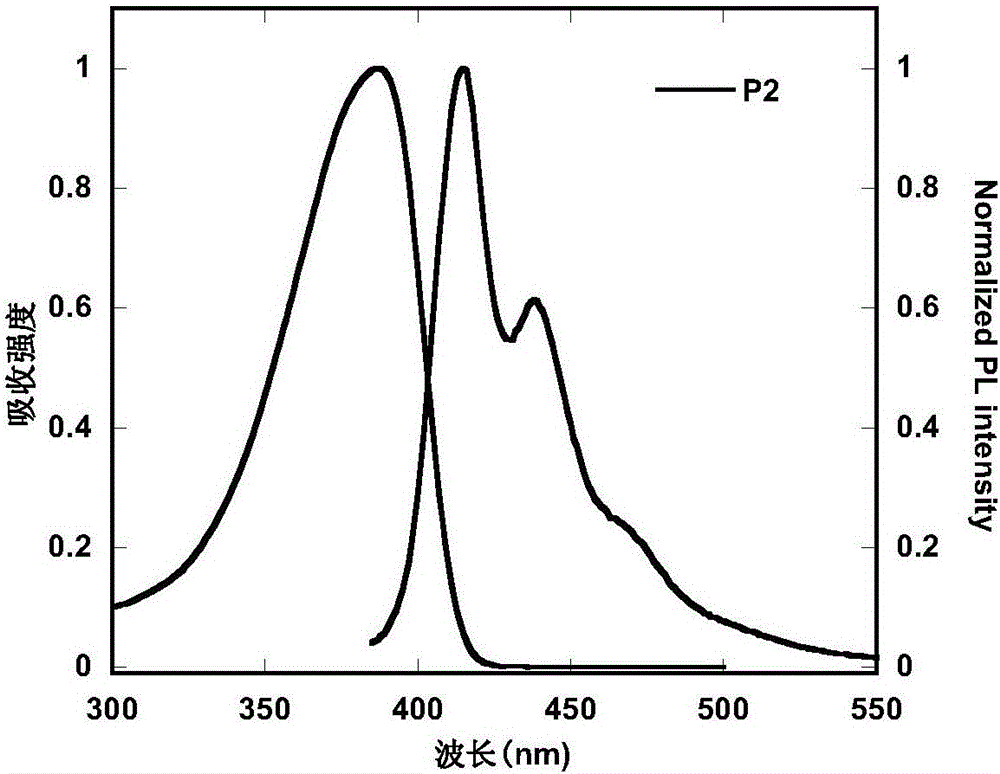Thermal activation delay fluorescence conjugated polymer light-emitting material containing sulfuryl group in side chain and preparation method and application thereof
A conjugated polymer, thermal activation delay technology, used in luminescent materials, chemical instruments and methods, semiconductor/solid-state device manufacturing, etc., can solve the problems of lower performance than small molecular materials, less materials, etc. The effect of good sex and novel structure
- Summary
- Abstract
- Description
- Claims
- Application Information
AI Technical Summary
Problems solved by technology
Method used
Image
Examples
Embodiment 1
[0061] Preparation of 2,7-dibromofluorene
[0062] In a 1000mL three-neck flask, add fluorene (60g, 301mmol), iron powder (0.84g, 15mmol) and chloroform (400mL), and put liquid bromine (35mL, 753mmol) and 115mL chloroform The mixed solution was slowly added dropwise into the reaction solution, and after the addition was completed, the reaction was vigorously stirred at room temperature for 12 hours. Add 200 mL of a saturated aqueous solution of sodium bisulfite to the reaction flask to quench the reaction. The reaction mixture was suction filtered, and the filter residue was washed three times successively with saturated aqueous sodium bisulfite solution, water and ethanol. After the filter residue was dried, it was washed with CHCl 3 Purification was carried out by recrystallization to obtain 77.8 g of white crystals, yield: 80%. 1 H NMR (300MHz, CDCl 3 ) (ppm): 7.54 (d, 2H), 7.44 (d, 2H), 7.31 (d, 2H), 3.86 (m, 2H). 13 C NMR (75MHz, CDCl 3 ) (ppm): 152.91, 144.49, 134.8...
Embodiment 2
[0065] Preparation of 2,7-dibromo-9,9-dioctylfluorene (M-1)
[0066] Under the protection of argon, in a 500mL three-necked flask, add 2,7-dibromofluorene (32.4g, 100mmol) and dimethyl sulfoxide (250mL), under vigorous stirring, add tetrabutylammonium bromide (1.61g , 5mmol), and then slowly dropwise added sodium hydroxide (40g, 1000mmol) 50wt% aqueous solution, after the addition was completed, reacted for 2 hours, and then injected 1-bromooctane (57.9g, 300mmol) in one go. After continuing to react for 10 hours, stop the reaction, pour the reaction solution into water, add aqueous hydrochloric acid for neutralization, extract with dichloromethane, wash 7 times with saturated brine, dry, spin dry the solvent, and use column chromatography to analyze the crude The product was purified by using silica gel as a fixation and petroleum ether as a fluidity. After purification, 43.8 g of a white solid was obtained with a yield of about 80%. 1 H NMR (300MHz, CDCl 3 )(ppm): 7.53(d, ...
Embodiment 3
[0069] Preparation of 2,7-bis(4,4,5,5-tetramethyl-1,3,2-dioxaborolan-2-yl)-9,9-dioctylfluorene (M-2)
[0070] Under the protection of argon, add 2,7-dibromo-9,9-dioctylfluorene (21.9g, 40mmol) and 250mL of anhydrous tetrahydrofuran into a 500mL three-neck flask, and cool the reaction liquid to -78°C with liquid nitrogen. ℃, slowly drop n-butyllithium in n-hexane solution (48mL, 2.5M, 120mmol), keep stirring at -78℃ for 2 hours, inject 2-isopropyl-4,4,5,5-tetra Methyl-1,3,2-dioxaborane (26g, 140mmol), let it rise to room temperature naturally, and continue to react for 20h. Add ammonium chloride aqueous solution to quench the reaction, rotary evaporate most of the solvent, the reaction mixture is poured into water, and extracted with dichloromethane, washed 5 times, the organic phase is separated, dried, filtered and spin-dried the solvent, and the crude product is analyzed by column chromatography. The product was purified by using silica gel as a fixation and petroleum ether...
PUM
| Property | Measurement | Unit |
|---|---|---|
| Resistance | aaaaa | aaaaa |
| Maximum lumen efficiency | aaaaa | aaaaa |
Abstract
Description
Claims
Application Information
 Login to View More
Login to View More - R&D
- Intellectual Property
- Life Sciences
- Materials
- Tech Scout
- Unparalleled Data Quality
- Higher Quality Content
- 60% Fewer Hallucinations
Browse by: Latest US Patents, China's latest patents, Technical Efficacy Thesaurus, Application Domain, Technology Topic, Popular Technical Reports.
© 2025 PatSnap. All rights reserved.Legal|Privacy policy|Modern Slavery Act Transparency Statement|Sitemap|About US| Contact US: help@patsnap.com



